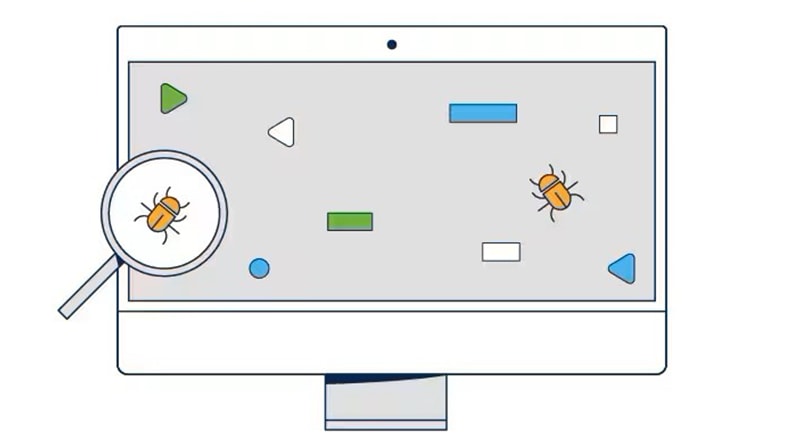7 types of malware
Virus
Viruses are a subgroup of malware. A virus is malicious software attached to a document or file that supports macros to execute its code and spread from host to host. Once downloaded, the virus will lie dormant until the file is opened and in use. Viruses are designed to disrupt a system's ability to operate. As a result, viruses can cause significant operational issues and data loss.
Worms
A worm is a type of malicious software that rapidly replicates and spreads to any device within the network. Unlike viruses, worms do not need host programs to disseminate. A worm infects a device through a downloaded file or a network connection before it multiplies and disperses at an exponential rate. Like viruses, worms can severely disrupt the operations of a device and cause data loss.
Trojan virus
Trojan viruses are disguised as helpful software programs. But once the user downloads it, the Trojan virus can gain access to sensitive data and then modify, block or delete the data. This can be extremely harmful to the performance of the device. Unlike normal viruses and worms, Trojan viruses are not designed to self-replicate.
Spyware
Spyware is malicious software that runs secretly on a computer and reports back to a remote user. Rather than simply disrupting a device's operations, spyware targets sensitive information and can grant remote access to predators. Spyware is often used to steal financial or personal information. A specific type of spyware is a keylogger, which records your keystrokes to reveal passwords and personal information.
Adware
Adware is malicious software used to collect data on your computer usage and provide appropriate advertisements to you. While adware is not always dangerous, in some cases adware can cause issues for your system. Adware can redirect your browser to unsafe sites, and it can even contain Trojan horses and spyware. Additionally, significant levels of adware can slow down your system noticeably. Because not all adware is malicious, it is important to have protection that constantly and intelligently scans these programs.
Ransomware
Ransomware is malicious software that gains access to sensitive information within a system, encrypts that information so that the user cannot access it and then demands a financial payout for the data to be released. Ransomware is commonly part of a phishing scam. By clicking a disguised link, the user downloads the ransomware. The attacker proceeds to encrypt specific information that can only be opened by a mathematical key they know. When the attacker receives payment, the data is unlocked.
Fileless malware
Fileless malware is a type of memory-resident malware. As the term suggests, it is malware that operates from a victim's computer's memory, not from files on the hard drive. Because there are no files to scan, it is harder to detect than traditional malware. It also makes forensics more difficult because the malware disappears when the victim computer is rebooted. In late 2017, the Cisco Talos threat intelligence team posted an example of fileless malware that they called DNSMessenger.
